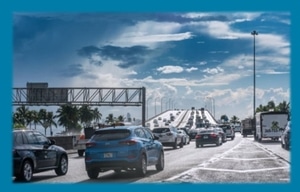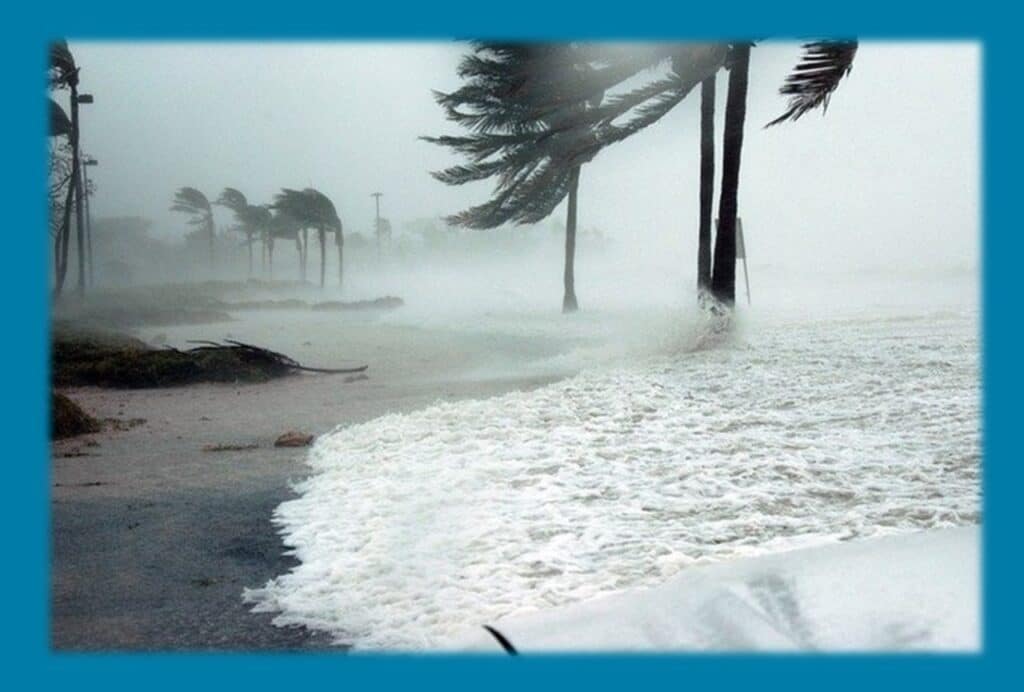Hurricane Preparedness in Panama City Beach
We’re halfway through the 2021 hurricane season.
And while locals may have already addressed hurricane preparedness in Panama City Beach, I wanted to include some helpful information for residents, as well as visitors who are in town when dangerous weather hits.
Even though our area hasn’t suffered a direct hit from a hurricane this year, we have been affected by the weather and rough seas.
And we’ve also been host to a number of temporary residents when they’ve been forced to evacuate their homes.
So here’s a refresher for those who are seasoned coastal inhabitants, as well as the newcomers.
Be sure to check out these tips and download a handy checklist below.
Understanding hurricanes and other dangerous weather
Merriam-Webster defines “hurricane” as “a tropical cyclone with winds of 74 miles (119 kilometers) per hour or greater that is usually accompanied by rain, thunder, and lightning, and that sometimes moves into temperate latitudes”.
And Florida’s Gulf Coast receives its fair share of the accompanying weather from hurricanes each year … even when there is no local landfall.
Storms, high winds, flash flooding, storm surge, waterspouts and tornadoes are common occurrences when there is a tropical storm or hurricane in the Gulf of Mexico, and you can expect rough waters in the gulf and temporary closure of some local activities and attractions.
Panama City Beach and the surrounding area is still recovering from damage sustained when Hurricane Michael made landfall at Mexico Beach in October of 2018.
And while it’s rare to have a storm here that causes so much damage, there is almost always some damage to buildings, roadways and beaches when a severe storm is in our area.
The good news is that there is enough warning ahead of a hurricane to prepare for it.
How to prepare for approaching bad weather

Here are a few common-sense tips to remember when the forecast predicts severe weather.
- High winds can be very damaging, so be sure to secure any loose items or outdoor furniture that may be turned into a projectile by heavy wind. You should consider bringing lightweight patio furniture indoors and turning outdoor tables and trampolines upside down until the winds have slowed down.
- Heavy rain often causes flash flooding in the area, and it sometimes washes out roads and bridges. Try to plan ahead for routes that use roads that don’t usually flood.
- The rain can also combine with the wind to blow into your home under doors, and around windows, if they aren’t properly sealed. Try to check any points you think may need repairs or maintenance before bad weather gets here.
- Think about a safe place to park any vehicles you won’t be needing right away. If you use a parking garage, you may want to use a higher floor, in case of flooding – or move vehicles inland to higher ground.
- If you have a boat, make arrangements to secure it properly.
- You may want to stock up on some plywood to board up large windows.
- If you live in a house, you may want to invest in a couple of tarps, in case of roof damage.
- It’s a great idea to make a list of any insured items, including make, model and serial numbers, along with pictures, in case you need the information for insurance claims.
- Prepare a list of emergency numbers and local facilities that may be used as a shelter, if needed.
- Make a plan with your family. Include a plan for communicating with each other, and an evacuation plan, if needed.
- Fill your gas tank, in you need to evacuate, or in case gas stations are without power for a while.
- Make sure that you have a contingency plan for pets, in the event of evacuation. Many hotels and vacation homes don’t allow pets, so you will need to plan ahead to make sure you find a place to take your pet, or a friend/family member who will care for the pets in a safe area.
- Charge all your devices. It may be a good idea to invest in a solar cell charger. Power is often out for a few days after a severe storm, and you may need to charge your phone before electricity has been restored.
- Freeze bottles of water. They can help keep your food cool if power is out, and you can drink the water as the ice thaws.
- You may want to pack some extra pillows, bedding or blankets – or a sleeping bag – if you have room.
- Prepare your hurricane kit. You’ll find a detailed list of items you need to include on the downloadable checklist from the Florida Division of Emergency Management. Place the items in waterproof containers or bins with lids.
- Keep your hurricane kit near the door, along with your keys, in case you need to evacuate quickly. You don’t want to forget something important – it may be a few days before you can return.
Download the Disaster Supply Kit Checklist
Be sure to pay extra attention to the “Important Documents” section. This is one of the most overlooked preparation efforts, but it’s one that can save you a lot of trouble after a disaster.
After the storm

You may encounter dangerous situation, even after the storm has passed.
- Damage to buildings can make them unsafe. Be aware of unstable buildings.
- Do not drive through standing water. You may not be able to see damage to roads, debris or downed power lines.
- Always use a flashlight for light, instead of candles, when possible.
- Make sure your tap water is safe to use for cooking and drinking. Storm damage may affect the water supply, so you may need to boil your water or use bottled water until you are notified that the water supply is not contaminated.
You’ll find more hurricane preparedness tips from FEMA by clicking here.
Even though hurricanes are somewhat rare, storms and other severe weather are part of Florida living. Following these tips and using the downloadable checklist can help you be prepared for a safer experience for you and your family.

